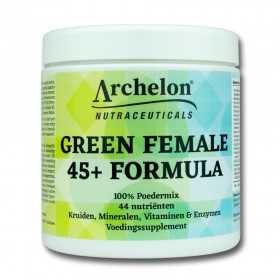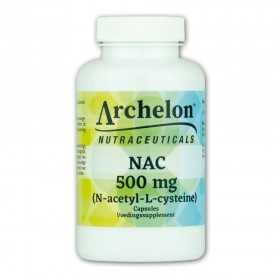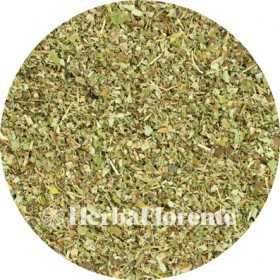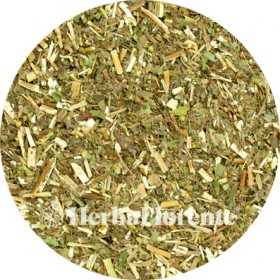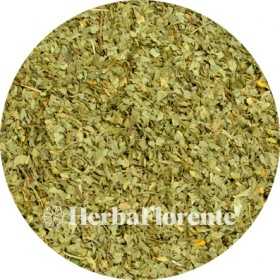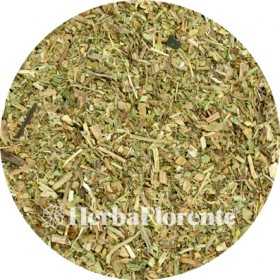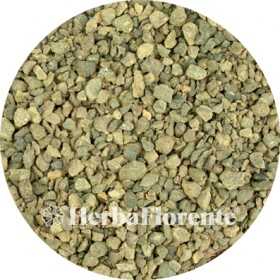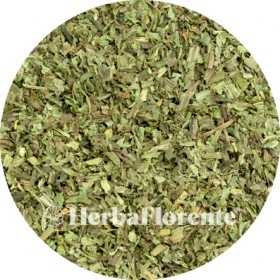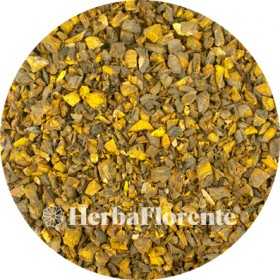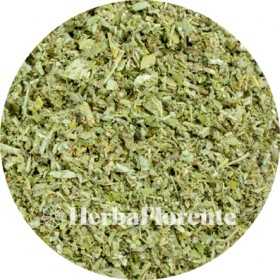P, Q, R, S, T
There are 27 products.
American Skullcap - Scutellaria lateriflora
Skullcap (Scutellaria) is a versatile genus of both annual and perennial plants, belonging to the Lamiaceae family. The genus includes about two hundred species, all of which are characterized by their characteristic, calyx-shaped flowers. These flowers are distinguished by clearly visible upper and lower lips. The name "Scutellaria" is derived from the Latin word "scutella", which means "small shield" or "saucer", and refers to the shape of the calyx.
€6.25
From: €6.25
Blackberry (Leaf) - Rubus fructicosus, Frucus Rubi
The genus Blackberry (Rubus) belongs to the rose family and has more than 1400 species worldwide. More than 200 of these species grow in the Netherlands and Belgium.
Blackberries are prized primarily for their fruits, which range in color from red to dark blue. They have a sweet taste and can be eaten fresh or processed into jam, for example.
The leaves of the blackberry can be used to make herbal tea. After picking, the leaves should be dried in a dry and airy place, after which they can be used to make tea.
Blackberries are prized primarily for their fruits, which range in color from red to dark blue. They have a sweet taste and can be eaten fresh or processed into jam, for example.
The leaves of the blackberry can be used to make herbal tea. After picking, the leaves should be dried in a dry and airy place, after which they can be used to make tea.
€2.00
From: €2.00
Blackcurrant - Ribes nigrum
The Latin name for blackcurrant is Ribes nigrum L. 'Nigrum' refers to the dark color and 'ribes' to the berries themselves. Various parts of the blackcurrant plant are attributed with different health benefits. The berries, seeds and leaves exhibit unique properties. For example, blackcurrant leaves are used to maintain healthy cartilage and to keep the joints flexible.
€2.95
From: €2.95
Dandelion (Herb) - Taraxum officinale - Cut
Dandelion (Taraxacum officinale) has been known for centuries for its ability to support liver and gallbladder function. Both the root and the above-ground parts of the plant are rich in nutrients. In addition, dandelion has a beneficial effect on digestion.
The rich nutritional value of dandelions makes it advisable to regularly pick some fresh leaves in the wild and add them to salads. They are especially tasty in the spring. The fresh yellow flowers can be used as a cheerful decoration in salads and dried they can be processed into a 'wild' herbal tea.
Dandelions contain a high level of bitter substances, which always indicates that they are beneficial for liver and gallbladder function.
The rich nutritional value of dandelions makes it advisable to regularly pick some fresh leaves in the wild and add them to salads. They are especially tasty in the spring. The fresh yellow flowers can be used as a cheerful decoration in salads and dried they can be processed into a 'wild' herbal tea.
Dandelions contain a high level of bitter substances, which always indicates that they are beneficial for liver and gallbladder function.
€2.20
From: €2.20
Dandelion (Root) - Taraxum officinale
Dandelion (Taraxacum officinale) has been known for centuries for its ability to support liver and gallbladder function. Both the root and the above-ground parts of the plant are rich in nutrients. In addition, dandelion has a beneficial effect on digestion.
The rich nutritional value of dandelions makes it advisable to regularly pick some fresh leaves in the wild and add them to salads. They are especially tasty in the spring. The fresh yellow flowers can be used as a cheerful decoration in salads and dried they can be processed into a 'wild' herbal tea.
Dandelions contain a high level of bitter substances, which always indicates that they are beneficial for liver and gallbladder function.
The rich nutritional value of dandelions makes it advisable to regularly pick some fresh leaves in the wild and add them to salads. They are especially tasty in the spring. The fresh yellow flowers can be used as a cheerful decoration in salads and dried they can be processed into a 'wild' herbal tea.
Dandelions contain a high level of bitter substances, which always indicates that they are beneficial for liver and gallbladder function.
€2.50
From: €2.50
Elder - Sambuci nigri
The elder (Sambucus nigra L.) is a native tree/shrub in the Netherlands that is widespread in various places in our country. Towards the end of May the elder tree blooms and produces large umbels of small, creamy white flowers that give off a sweet, floral scent. These blossoms are used to make elderflower liqueur, syrup or pancakes. In addition to their delicious taste, the blossoms are also rich in substances, including up to 3% flavonoids such as rutin, quercetin and astragalin. In addition, they contain tannins (tannins), triterpenes, fatty acids and essential oil.
€3.60
From: €3.60
Feverfew - Tanacetum parthenium
Feverfew, also known as Tanacetum parthenium or "feverfew," is a valuable herb that has been valued in traditional medicine for centuries. This aromatic perennial plant, native to southwestern Europe, has a rich history of supporting women's health, particularly during pregnancy and childbirth. Historically, feverfew was used to induce labor and treat puerperal fever, which explains the origin of its name.
The plant is also known for its antipyretic properties and is still grown in herb gardens for this purpose. One of the most notable uses of feverfew is in the treatment of migraines.
The plant is also known for its antipyretic properties and is still grown in herb gardens for this purpose. One of the most notable uses of feverfew is in the treatment of migraines.
€2.95
From: €2.95
Geranium - Pelargonium sidoides - Cut
The Cape geranium, also known as Pelargonium sidoides, is a South African geranium species that has been part of indigenous herbal lore for centuries. The locals call it 'umckaloabo'. This plant thrives in the wild among tall grass and aromatic flower beds on the slopes of the Cape coast. It has soft, velvety gray-green leaves and deep magenta-colored flowers. The dried and ground rhizomes are dark red in color. They have a soothing effect on the airways and are therefore suitable for providing support for airway problems.
€4.40
From: €4.40
Goldenrod - Solidago virgaurea - Cut
Solidago virgaurea, also known as Goldenrod or Goldenrod, is a native plant that traditionally grows in Europe and Asia. In earlier times, this golden yellow flower was a permanent part of the Dutch herb garden. The yellow flowers were traditionally dried on a large scale and ground into a base for paint.
Solidago supports the kidneys and their function. It can be used for discomfort prior to menstruation and menopausal symptoms. In addition, solidago helps keep the joints flexible, strengthens resistance and contributes to good mental balance.
Solidago supports the kidneys and their function. It can be used for discomfort prior to menstruation and menopausal symptoms. In addition, solidago helps keep the joints flexible, strengthens resistance and contributes to good mental balance.
€2.00
From: €2.00
Lime tree Blossom - Tiliae officinalis
The lime tree (Tilia) is native to the Benelux and is known for its remarkable lifespan, which can easily exceed 1000 years. This majestic tree can reach a height of 20 to 30 meters, depending on its growing conditions. The Latin name for the lime tree is Tilia.
Although the lime tree is widespread in Europe, it is not found in the northernmost and southernmost parts of the continent. Outside Europe, the lime is also found in parts of Asia, but to a much lesser extent.
The tree blooms in the months of June and July. The lime blossom produces a lot of honey, and the flowers can be used to make herbal tea.
Although the lime tree is widespread in Europe, it is not found in the northernmost and southernmost parts of the continent. Outside Europe, the lime is also found in parts of Asia, but to a much lesser extent.
The tree blooms in the months of June and July. The lime blossom produces a lot of honey, and the flowers can be used to make herbal tea.
€5.00
From: €5.00
Lungwort - Pulmonaria officinalis
Lungwort, belonging to the genus Pulmonaria in the rough-leaved family (Boraginaceae), owes its botanical name to the Latin word 'pulmo', which means 'lung'. This is because of the similarity that was seen between the drawing on the leaves of the spotted lungwort and (diseased) human lungs. According to the signature theory, the plant was previously used as a remedy for lung diseases because of this similarity. The Dutch name 'pulmonary herb' is directly derived from the botanical name, and this name also occurs in several other Western European languages.
€5.91
€6.95
From: €5.91
Milk Thistle (Herb) - Sylibum marianum, Cardui Mariae - Cut
Milk thistle (Silybum marianum), also known as milk thistle or milk thistle, is a spiny plant native to the Mediterranean region, but which also grows in our area. It belongs to the composite family. Milk thistle has been used for centuries as a natural remedy to support liver and bile function. It can be used as part of a cleansing regimen to assist the liver in the detoxification process.
€2.00
From: €2.00
Papaya - Papayae
Out-of-Stock
The papaya (Carica papaya) belongs to the Caricaceae family and is imported to Belgium and the Netherlands from Central America, Asia, Central and South Africa. Recently, the papaya has also been grown in greenhouses in the Netherlands, which requires special soil. This fruit is available all year round, without significant seasonality.
The papaya grows on the trunk of a melon tree and is therefore also called "tree melon". The origin of the papaya tree is in Mexico. This tree can grow up to six meters tall, with a hollow trunk and large, finger-shaped leaves. There are several subspecies of the papaya.
The papaya grows on the trunk of a melon tree and is therefore also called "tree melon". The origin of the papaya tree is in Mexico. This tree can grow up to six meters tall, with a hollow trunk and large, finger-shaped leaves. There are several subspecies of the papaya.
€3.60
From: €3.60
Parsley - Petroselini - Cut
Parsley (Petroselinum crispum) is a biennial, winter-hardy herbaceous plant belonging to the lacecap family (Apiaceae). It is used extensively in European, American and Middle Eastern cuisine for its fresh taste.
To the ancient Greeks, parsley symbolized joy and was used together with marjoram as a hangover remedy. The Romans spread the use of this herb throughout Western Europe. In the Middle Ages, parsley served as a vegetable and was grown, among other things, in the imperial gardens of Charlemagne.
Adding parsley (usually the leaves) to dishes is best done just before serving. It is often combined with garlic in butter to make herb butter and can also be used in salads. Ground parsley seeds serve as a spice.
To the ancient Greeks, parsley symbolized joy and was used together with marjoram as a hangover remedy. The Romans spread the use of this herb throughout Western Europe. In the Middle Ages, parsley served as a vegetable and was grown, among other things, in the imperial gardens of Charlemagne.
Adding parsley (usually the leaves) to dishes is best done just before serving. It is often combined with garlic in butter to make herb butter and can also be used in salads. Ground parsley seeds serve as a spice.
€2.20
From: €2.20
Passionflower - Passiflora incarnata
Passionflower (Passiflora incarnata) is known as a traditional herb that has long been used to reduce stress and inner turmoil. Native people of Central and North America used various parts of the plant to relax and sleep better. It is a natural sedative.
Although the blue passion flower originally only grew in America, it can now be found almost everywhere. The flowers of the Passiflora incarnata are not only beautiful to look at, but also edible. In the fall, passion fruits grow and the leaves are also edible. These leaves are rich in tannins, flavanols, saponins, choline and magnesium.
Although the blue passion flower originally only grew in America, it can now be found almost everywhere. The flowers of the Passiflora incarnata are not only beautiful to look at, but also edible. In the fall, passion fruits grow and the leaves are also edible. These leaves are rich in tannins, flavanols, saponins, choline and magnesium.
€2.40
From: €2.40
Pau D'arco - Tabeuiae - (Cut)
Pau d'arco (Tabebuia avellanedae) is an imposing tree that thrives in the Amazon rainforest. The bark of the pau d'arco has been used for centuries in traditional herbal medicine for its diverse uses, including its supportive effects on the immune system.
The inner layer of the bark of Tabebuia avellanedae is packed with flavonoids, powerful antioxidants that protect our bodies against oxidative damage caused by free radicals. In addition, it contains a significant amount of quinones. More than 20 quinone compounds have already been discovered in the bark of the pau d'arco, such as lapachol and beta-lapachone. In addition, the bark contains substances that help defend against unfavorable bacteria and fungi.
The inner layer of the bark of Tabebuia avellanedae is packed with flavonoids, powerful antioxidants that protect our bodies against oxidative damage caused by free radicals. In addition, it contains a significant amount of quinones. More than 20 quinone compounds have already been discovered in the bark of the pau d'arco, such as lapachol and beta-lapachone. In addition, the bark contains substances that help defend against unfavorable bacteria and fungi.
€2.50
From: €2.50
Plantain Broadleaf - Plantaginis major
The Plantain Broadleaf (Plantago major) is a plant belonging to the plantain family (Plantaginaceae) and varies in size from 10 to 50 cm. It forms a dense leaf rosette that is resistant to foot traffic, which is why it is often considered a weed. This plant species is common in gardens, along roads and paths, and is sometimes derisively called the "white man's footprint". Nevertheless, there is a cultivated variety known as Plantago major 'Rosularis'.
€2.00
From: €2.00
Propolis - Propolis
Propolis, the secret weapon of the bee colony, is used to protect the hive or hive against bacteria and fungi and as 'cement' to close the openings. It is a natural brown-red substance consisting of vegetable resins, beeswax, essential oils and pollen, with traces of vitamins and minerals.
From June onwards, honey bees collect resin from the buds and leaves of trees and herbaceous plants on warm days. They mix this with their saliva and process it with their paws, ultimately creating propolis.
From June onwards, honey bees collect resin from the buds and leaves of trees and herbaceous plants on warm days. They mix this with their saliva and process it with their paws, ultimately creating propolis.
€44.00
From: €44.00
Quassia - Quassiae - Cut
Quassia, known in Surinamese as kwasibita, is the heartwood of the Quassia amara, a plant species from the Quassia genus within the Tree of Heaven family. This South American plant is often planted in the tropics for its use as a remedy for malaria.
Quassia amara is a small, evergreen shrub found in tropical South America, particularly the Guianas, northern Brazil and Venezuela. The plant grows in the understory of the rainforest and its striking red flowers are pollinated by hummingbirds. Because of these beautiful flowers, the plant is also often planted for decorative purposes.
Quassia amara is a small, evergreen shrub found in tropical South America, particularly the Guianas, northern Brazil and Venezuela. The plant grows in the understory of the rainforest and its striking red flowers are pollinated by hummingbirds. Because of these beautiful flowers, the plant is also often planted for decorative purposes.
€2.40
From: €2.40
Ribwort Plantain - Plantaginis lanceolata - Cut
Narrow plantain (Plantago lanceolata) is a native plant that thrives in Europe, parts of Asia, North Africa and North America. The young leaves of this plant contain a rich mix of beneficial substances, including mucilages, tannins, bitter substances, flavonoids and minerals such as potassium and zinc. Best known for its soothing effect on the throat thanks to its mucilages, plantain also provides support for the immune system and promotes normal intestinal function. In addition, it can help maintain flexible joints and is beneficial for the liver.
€2.00
From: €2.00
Rosemary - Rosmarini officinalis - Cut
Rosemary (Rosmarinus officinalis L.) is a fragrant, compact shrub belonging to the Lamiaceae family. This versatile herb has been used for centuries for various purposes, both culinary and for health promotion. Originally from Mediterranean regions, the Rosmarinus officinalis displays lush blooms in spring with small, lavender blue flowers.
The name "rosemary" has its origins in the Latin "ros" (roris), meaning "dew", and "marinus", meaning "sea": "dew of the sea". Since ancient times, by both the ancient Greeks and Romans, Rosmarinus officinalis has been valued for its health-supporting properties. It helps with digestion, strengthens the immune system and contains antioxidants.
The name "rosemary" has its origins in the Latin "ros" (roris), meaning "dew", and "marinus", meaning "sea": "dew of the sea". Since ancient times, by both the ancient Greeks and Romans, Rosmarinus officinalis has been valued for its health-supporting properties. It helps with digestion, strengthens the immune system and contains antioxidants.
€2.00
From: €2.00
Russian / Chinese Rhubarb - Rheum palmatum / Rheum officinalis
Rheum officinale, also known as Chinese rhubarb or Russian rhubarb, belongs to the knotweed family (Polygonaceae). This plant is native to mountainous areas in western and northwestern China, India, Tibet, Russia and Turkey. The plant grows at altitudes between 1200 and 4000 meters and can reach an impressive height of 1.5 to 2 meters.
€2.50
From: €2.50
Sage - Salviae officinalis - Cut
True sage (Salvia officinalis L.) is a well-known herb that is used for various purposes. It has been used for centuries from China to ancient Rome. All kinds of magical properties were attributed to the little purple flower.
Sage is an antioxidant and can be used for menopausal symptoms. In addition, it supports normal menstruation. Sage is a natural soother for the throat, it supports the immune system and contributes to normal digestion.
Sage is an antioxidant and can be used for menopausal symptoms. In addition, it supports normal menstruation. Sage is a natural soother for the throat, it supports the immune system and contributes to normal digestion.
€2.00
From: €2.00
Savory Wort - Satureja hortensis
Savory (Satureja) belongs to the lip flower family (Lamiaceae or Labiatae). The scientific name of savory is derived from 'satyr'. During Roman times, savory was mainly used by the followers of Bacchus. They wore it in wreaths in their hair and used it regularly to increase their potency. Although many herbal books do not mention this, savory is one of the oldest remedies for increasing potency.
In ancient times, the Romans were fond of savory sauce, which was made with vinegar and served with fish and meat dishes in the same way as mint sauce. Most cooks had their own recipes for using savory. They used it in stuffings for veal, in sauces for fish and other dishes, and even in sausages and pork pies.
In ancient times, the Romans were fond of savory sauce, which was made with vinegar and served with fish and meat dishes in the same way as mint sauce. Most cooks had their own recipes for using savory. They used it in stuffings for veal, in sauces for fish and other dishes, and even in sausages and pork pies.
€2.00
From: €2.00








